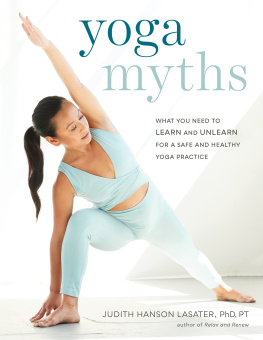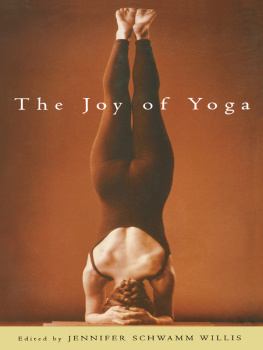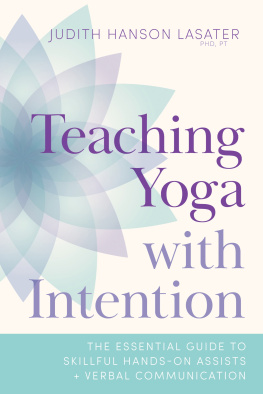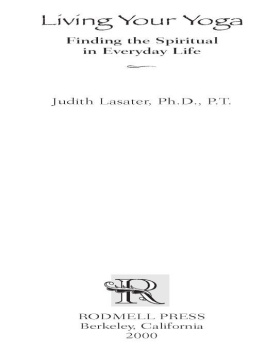Judith Hanson Lasater - Yoga Myths: What You Need to Learn and Unlearn for a Safe and Healthy Yoga Practice
Here you can read online Judith Hanson Lasater - Yoga Myths: What You Need to Learn and Unlearn for a Safe and Healthy Yoga Practice full text of the book (entire story) in english for free. Download pdf and epub, get meaning, cover and reviews about this ebook. year: 2020, publisher: Shambhala, genre: Religion. Description of the work, (preface) as well as reviews are available. Best literature library LitArk.com created for fans of good reading and offers a wide selection of genres:
Romance novel
Science fiction
Adventure
Detective
Science
History
Home and family
Prose
Art
Politics
Computer
Non-fiction
Religion
Business
Children
Humor
Choose a favorite category and find really read worthwhile books. Enjoy immersion in the world of imagination, feel the emotions of the characters or learn something new for yourself, make an fascinating discovery.
- Book:Yoga Myths: What You Need to Learn and Unlearn for a Safe and Healthy Yoga Practice
- Author:
- Publisher:Shambhala
- Genre:
- Year:2020
- Rating:5 / 5
- Favourites:Add to favourites
- Your mark:
- 100
- 1
- 2
- 3
- 4
- 5
Yoga Myths: What You Need to Learn and Unlearn for a Safe and Healthy Yoga Practice: summary, description and annotation
We offer to read an annotation, description, summary or preface (depends on what the author of the book "Yoga Myths: What You Need to Learn and Unlearn for a Safe and Healthy Yoga Practice" wrote himself). If you haven't found the necessary information about the book — write in the comments, we will try to find it.
Judith Hanson Lasater: author's other books
Who wrote Yoga Myths: What You Need to Learn and Unlearn for a Safe and Healthy Yoga Practice? Find out the surname, the name of the author of the book and a list of all author's works by series.
Yoga Myths: What You Need to Learn and Unlearn for a Safe and Healthy Yoga Practice — read online for free the complete book (whole text) full work
Below is the text of the book, divided by pages. System saving the place of the last page read, allows you to conveniently read the book "Yoga Myths: What You Need to Learn and Unlearn for a Safe and Healthy Yoga Practice" online for free, without having to search again every time where you left off. Put a bookmark, and you can go to the page where you finished reading at any time.
Font size:
Interval:
Bookmark:
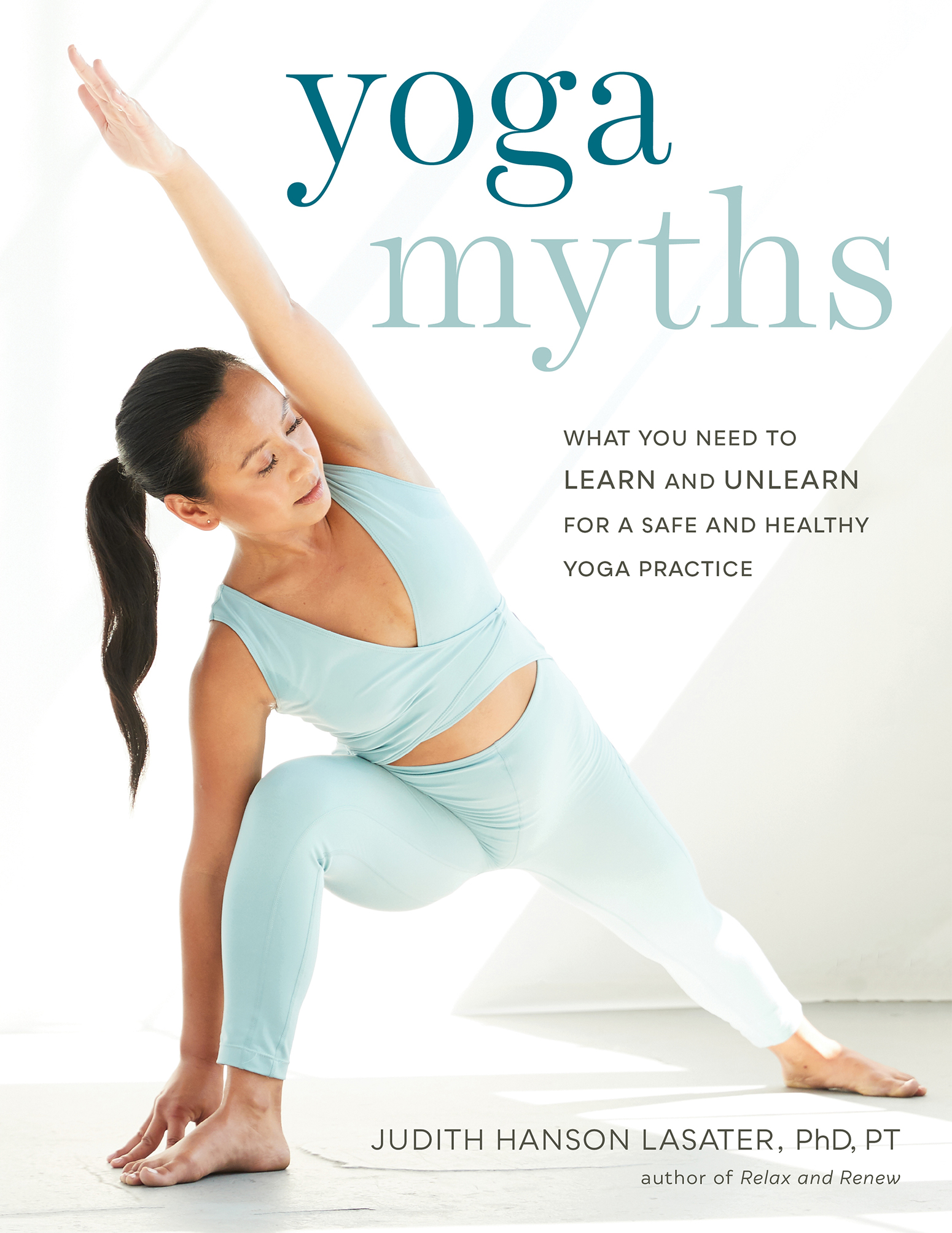
ALSO BY JUDITH HANSON LASATER
30 Essential Yoga Poses: For Beginning Students and Their Teachers
Living Your Yoga: Finding the Spiritual in Everyday Life
Relax and Renew: Restful Yoga for Stressful Times
Restore and Rebalance: Yoga for Deep Relaxation
What We Say Matters: Practicing Nonviolent Communication
A Year of Living Your Yoga: Daily Practices to Shape Your Life
Yoga Abs: Moving from Your Core
Yoga for Pregnancy: What Every Mom-to-Be Needs to Know
Yogabody: Anatomy, Kinesiology, and Asana
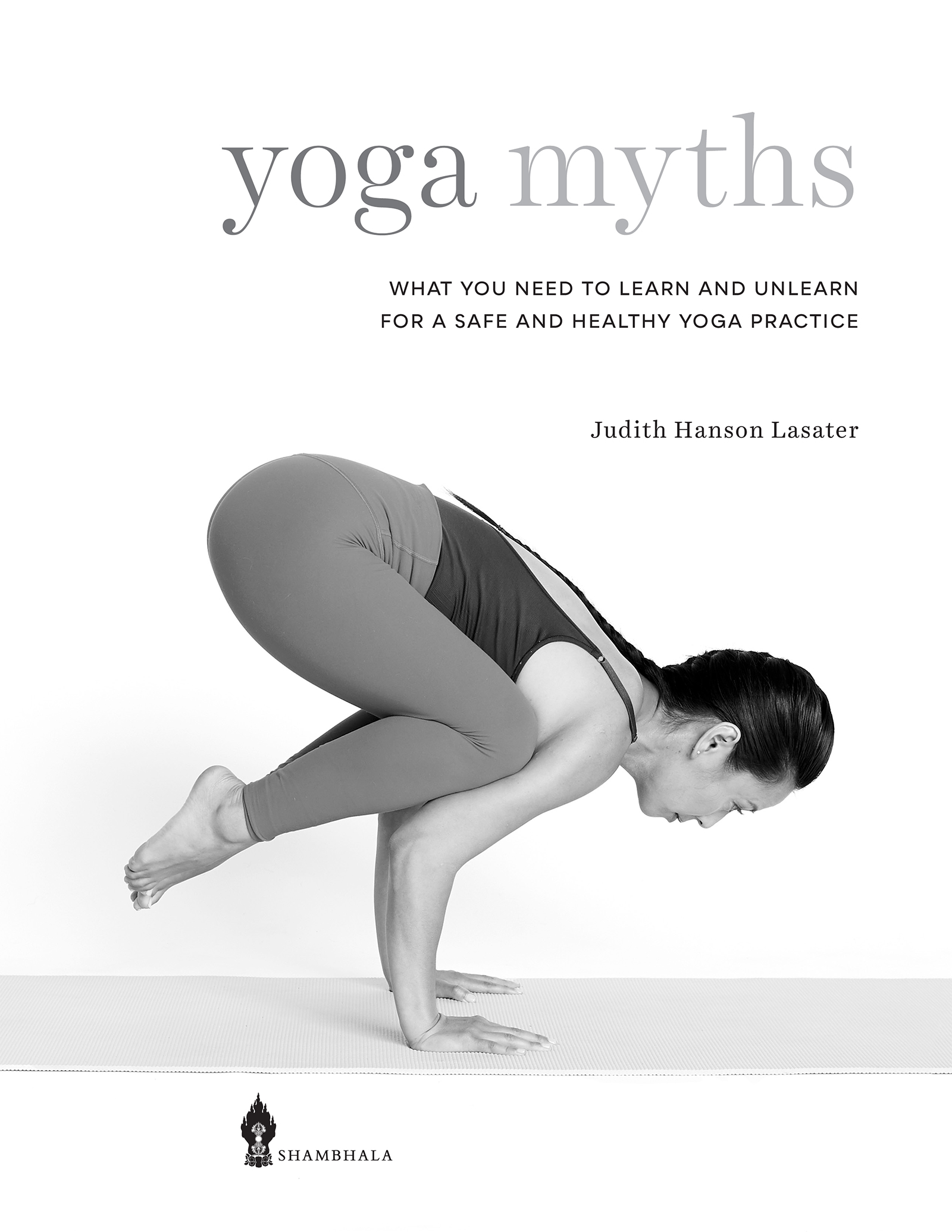
Shambhala Publications, Inc.
4720 Walnut Street
Boulder, Colorado 80301
www.shambhala.com
Text 2020 by Judith Lasater
Photos 2020 by David Martinez
Illustrations 2020 Wren Polansky
Front cover photo: David Martinez
Cover design and interior design: Laura Shaw Design
All rights reserved. No part of this book may be reproduced in any form or by any means, electronic or mechanical, including photocopying, recording, or by any information storage and retrieval system, without permission in writing from the publisher.
Library of Congress Cataloging-in-Publication Data
Names: Lasater, Judith, author.
Title: Yoga myths: what you need to learn and unlearn for a safe and healthy yoga practice / Judith Hanson Lasater.
Description: First edition. | Boulder, Colorado: Shambhala, [2020] |
Includes bibliographical references and index.
Identifiers: LCCN 2019042112 | ISBN 9781611807967 (trade paperback)
eISBN 9780834843004
Subjects: LCSH: Hatha yoga.
Classification: LCC RA781.7 .L376 2020 | DDC 613.7/046dc23
LC record available at https://lccn.loc.gov/2019042112
a_prh_5.5.0_c0_r1
For Glyn Elizabeth, Karen, Nico, Joe, and all my grandchildren, with great love

Trust yourself first. JUDITH HANSON LASATER
M ANY OF us have heard and shared the refrain Everything happens for a reason. While we might engage in discussion about the relevance of synchronicities and luck, dumb or otherwise, it seems likely we can agree that sometimes we experience life in a way that reveals the locus of the muted, hidden places within us. Circumstances unfold in such a way that we awaken to the impetuses behind our choices as well as the residues. Frequently, we enlist the support of a trusted teacher to guide our inquiry and help us recover our footing when it feels like the earth has fallen out from under us. If were fortunate, we connect with someone who models a way to be in the world that resonates with our heart brain. When I think back to September 2002, I see clearly how my decision to attend a shoulder anatomy workshop pulled me onto the path I tread today. That workshop was led by my dear teacher, mentor, colleague, and friend, Judith Hanson Lasater.
Over the course of three days, Judith shared clear, sensible descriptions of the shoulder and its movements. I felt immediate and welcome changes in the asana we practiced during her lessons. To this day, my shouldersand the rest of meare grateful that I went to that workshop! More than the relief provided by healthy joint positioning, this experience also left an indelible imprint on my psyche. Judith was the first yoga teacher with whom Id studied that asked for my consent to be touched. She never exerted power over me; instead, she consistently reflected back to me my own inner wisdom by asking about my experience and inviting me to explore further. By studying anatomy and kinesiology in the context of asana, I learned to trust my bodys natural intelligence and somatic awareness, a state that Judith calls bodyfulness. As a consequence of connecting to my bodyfulness, I began to trust my own inner wisdom.
The book that you look at now is a summation of Judiths decades-long practice and study of asana. Yoga Myths is an invitation to create asana from a foundation of trust: in our bodies, intuition, and self-awareness. The chapters that follow are also informed by her rigorous study of our form, function, and movement. Judith melds anatomical realities with her many years of teaching to thousands of students the world over. Yoga Myths presents a framework for practice that encourages each of us to shape asana for ourselves, guided by respect for each persons unique anatomy, healthy directions and ranges of movement, and self-compassion. Each chapter offers an opportunity to understand and explore how different movement choices in asana affect our bodily sensations as well as the feelings and emotions that accompany them. Rather than prescribing strict alignment principles to create asana that match externally imposed ideas of presentation, Judith invites us to see, feel, move, and trust our bodyfulness. She welcomes each of us to make informed choices from the foundation of our personal structure, shaped by our relationship with gravity, to deepen our somatic and psychic exploration of asana.
Yoga Myths is an invaluable resource for students and teachers alike. Judiths accurate and direct explanations of how we choose to express asana harken us to the inner voices that echo within our interstitial space. Now, take this book, set up your practice space, and experiment with some myth-busting on the mat.
Mary Richards, MS
Yoga teacher and anatomy nerd
Alexandria, Virginia
November 2019
WHAT IS A YOGA MYTH AND WHY DO YOU NEED TO KNOW?
L ET ME BEGIN with a story about my first class teaching yoga. I will then explain more about yoga myths, what they are, and why we need to educate ourselves to avoid getting stuck in believing them. At the end of this introduction, I will suggest how to use this book to guide you on your journey as you rediscover the inherent intelligence to be found in natural movement.
I remember the first yoga class I ever taught. Walking into that class, I felt naively confident. But that confidence quickly dissolved because it was based solely on the fact that I loved yoga and practiced myself every day. While this enthusiasm was a great asset, it was not enough; I had absolutely no formal training in how to teach.
This lack of training soon became apparent to me and inspired me to attend physical therapy school and to study for a PhD in East-West psychology. Even though I graduated many years ago, I still continue to study the art and craft of teaching yoga. I believe that teaching yoga is a privilege, not a right, and that the best teachers always yearn to understand more about what is safe and effective to teach, and how they can effectively communicate that to students. I also want to train my students on how to practice safely and effectively, rather than just putting them through their paces while they are in class.
Because yoga has become more and more popular and integrated into Western culture, millions of people outside of India study and practice yoga. Along with this has come a proliferation of yoga teachers.
What I have noticed almost universally when I travel to teach yoga teachers is that there are a number of commonly taught principles in yoga classes that are not based in what I call anatomical reality. Some of these principles can interfere with the bodys structure and the way the joints and muscles actually work in asana (posture or pose) practice, as well as in normal daily movement.
Font size:
Interval:
Bookmark:
Similar books «Yoga Myths: What You Need to Learn and Unlearn for a Safe and Healthy Yoga Practice»
Look at similar books to Yoga Myths: What You Need to Learn and Unlearn for a Safe and Healthy Yoga Practice. We have selected literature similar in name and meaning in the hope of providing readers with more options to find new, interesting, not yet read works.
Discussion, reviews of the book Yoga Myths: What You Need to Learn and Unlearn for a Safe and Healthy Yoga Practice and just readers' own opinions. Leave your comments, write what you think about the work, its meaning or the main characters. Specify what exactly you liked and what you didn't like, and why you think so.

